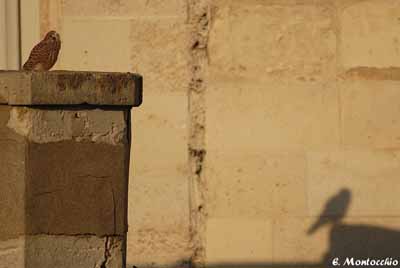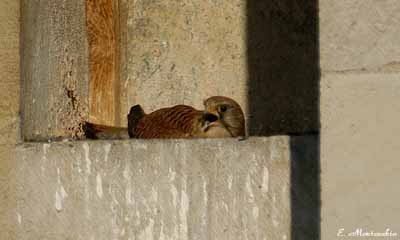
COMMON KESTREL REPRODUCTION
From an observation of the Château de Vincennes’ Common Kestrels
Château de Vincennes, near Paris, is one of the most important castles in French History. This big and well preserved monument, built between the 14th and the 17th century, shows six towers and three gates. It is surrounded by deep moat which bed is lined with stones.
It did not take much more to attract the Common Kestrel, this monument and old stones’ lover!
This elegant bird of prey is monogamous. The sedentary pairs stay together all the life, whereas the migratory birds may often change of mate.
They usually return to the same nest-site every season. Here, it is a cavity above a door, where both male and female often sit at the beginning of the breeding season.
To learn more about the Common Kestrel
From an observation by photographs by Eugène Montocchio
His website :
Galerie Photos Nature
Photographs by Eugène Montocchio made regularly in situ during all the nesting period.
All about the Brood 2009
Other broods : Broods 2006-2007-2008
Text by Nicole Bouglouan
Sources :
GUIDE DES RAPACES DIURNES – Europe, Afrique du Nord et Moyen-Orient de Benny Génsbol – Delachaux et Niestlé – ISBN : 2603013270
Wikipedia (Wikipedia, The Free Encyclopedia)

Courtship displays occur regularly. The male flies and circles the female which sits on ground or wall. The male also performs flapping flight and glides while calling, before to alight close to the female.
Then copulation occurs.
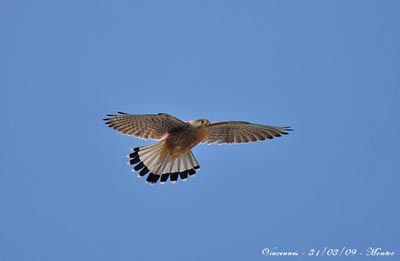
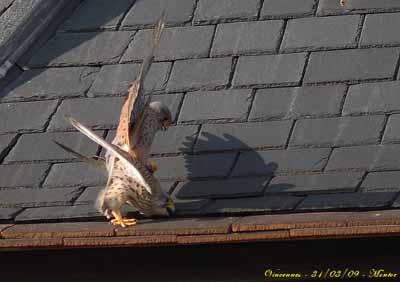
From then on, both adults fly over their territory, frequently sitting at nest-site or on close perches.
The male performs courtship feeding and regularly brings food to the female. She takes the prey and flies away for feeding.
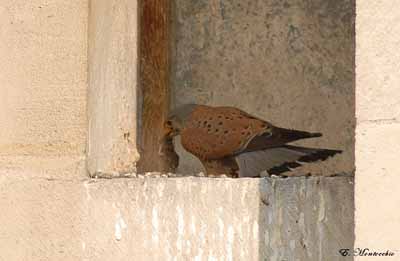
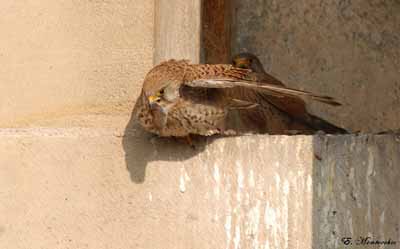
Female lays 3-6 eggs on the cavity floor where there is no lining or nest materials.
She incubates the eggs during about 27-29 days.
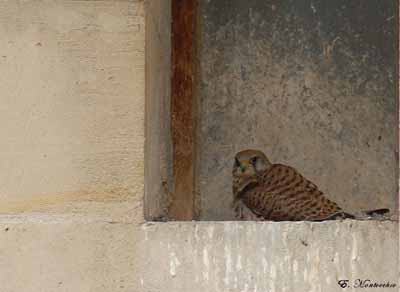
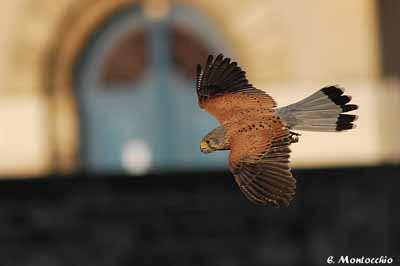
The male feeds her, bringing preys several times per day.
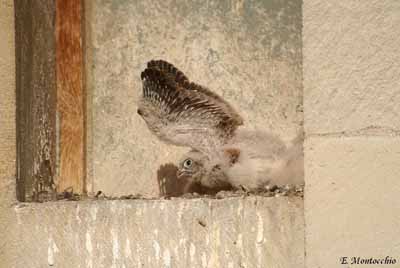
The chicks hatch over 3 to 5 days. They are covered in thick white down.
Both parents feed them. The preys are teared up into pieces and softly given to each chick.
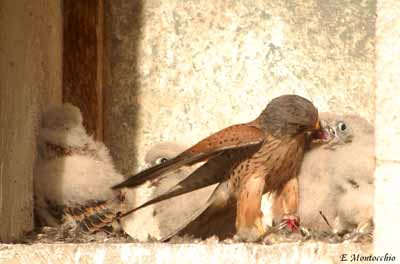
Young remain at nest during 27-32 days. All day round, parents bring food to the nest, mainly rodents and some birds.
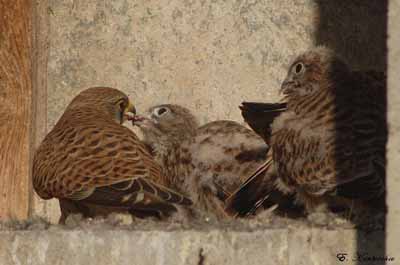
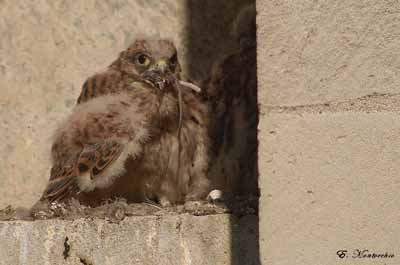
Maybe too much ???
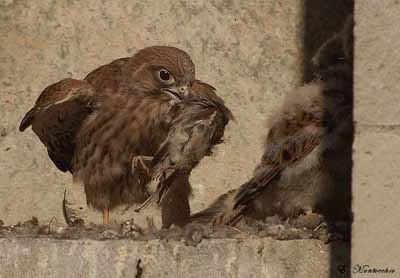
Young also feed on birds.
Parents feed the young during the nesting period, and for one month more after fledging.
Common Kestrel feeds mainly on rodents (95%), birds (3%) and lizards (1, 5%). They also consume insects according to the season.
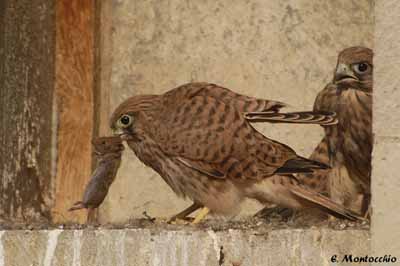
Male and female come and go continuously. They have five young begging food from dawn to dusk…
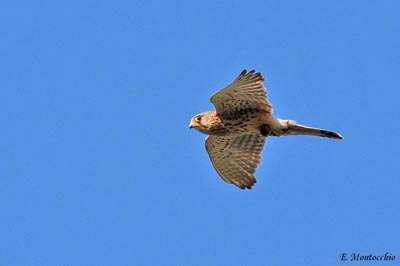
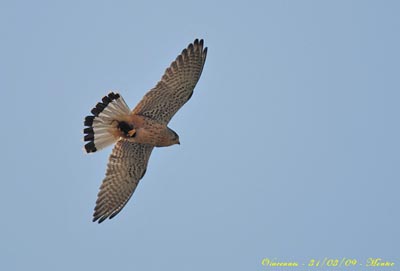
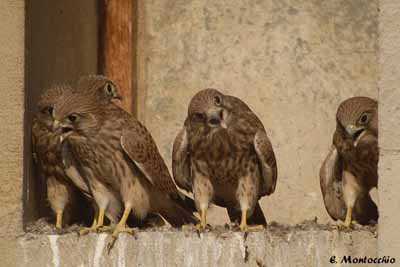
Young are now feathered and ready to take flight.
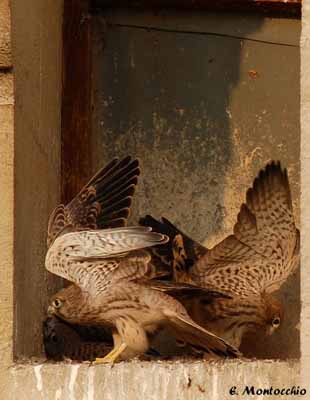
They perform wing beats and stretch their wings.
The young leave the nest in the early morning. They remain close to the nest-site, testing their wings.
Parents still feed them outside the nest.
Landing could be difficult…
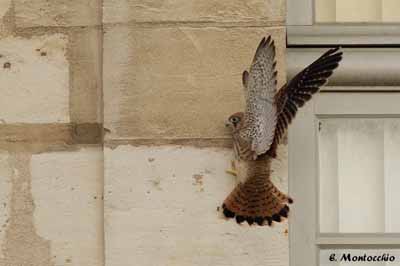
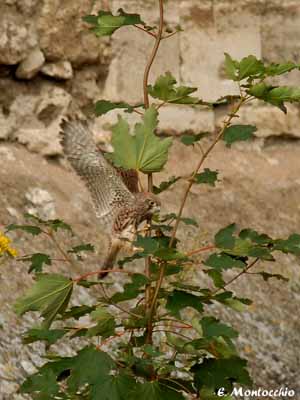
Not really easier in tree…
Now, they have to learn how to fly and hunt in order to survive.
They reach the surroundings of the Château de Vincennes little by little. They have to discover the Nature and its beauties, but also dangers and surprises.
Their life will be beautiful if they are able to take advantage of this recent freedom.
Good luck!
